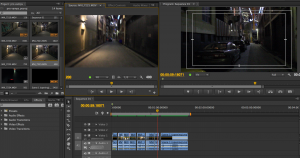What are themes? a categorised idea? They do make statements that generate different reactions to the audience as well as the authors yet have the ability to teach them about each theme. From the readings… I’ve realised that some themes expresses a value, say of love, family and etc. and take a side on an issue. It is in fact a product of story elements, emerging from combinations of those elements, like the principle of art when a colour is the elements of art. We can say that red tones and colours as the elements gives a sense of love and passion themes. So basically, storytelling can be described as theme-telling.
But where do they come from? According to the reading, it is evident from our own experiences and explorations of feelings. Have you heard anyone said “everyone’s an artist”? But are all of us really? So what makes us an artists? I’ve found that everybody has humanely qualities but artists are the ones driven to “investigate, arrange and organise them”. They are the ones who has curiosity and the urge to understand needs, wants, feelings, life… and that is how and where we find theme. It does depends on ourselves and our values.
This notions of finding themes to know my own identity encourages me to a further self-discovery in order to make films. The process in which I can learn this notion is practice, keep creating, putting down ideas into screenplay because “storytelling is a process of self-discovery”. This is why auteurs like Scorsese, Spielberg, Burton and many other great filmmakers each have constant themes within their films. An example of this is Scorsese’s constant use of comedic elements to share ideas about guilt, faith or manhood as it is presented in gangster films Goodfellas and The Wolf of Wall Street.
https://equella.rmit.edu.au/rmit/file/0efcc57c-cc65-5cf6-4d62-67229e1e4f9c/1/31259008892189.pdf
http://blogs.indiewire.com/theplaylist/retrospective-the-films-of-martin-scorsese-20131217










